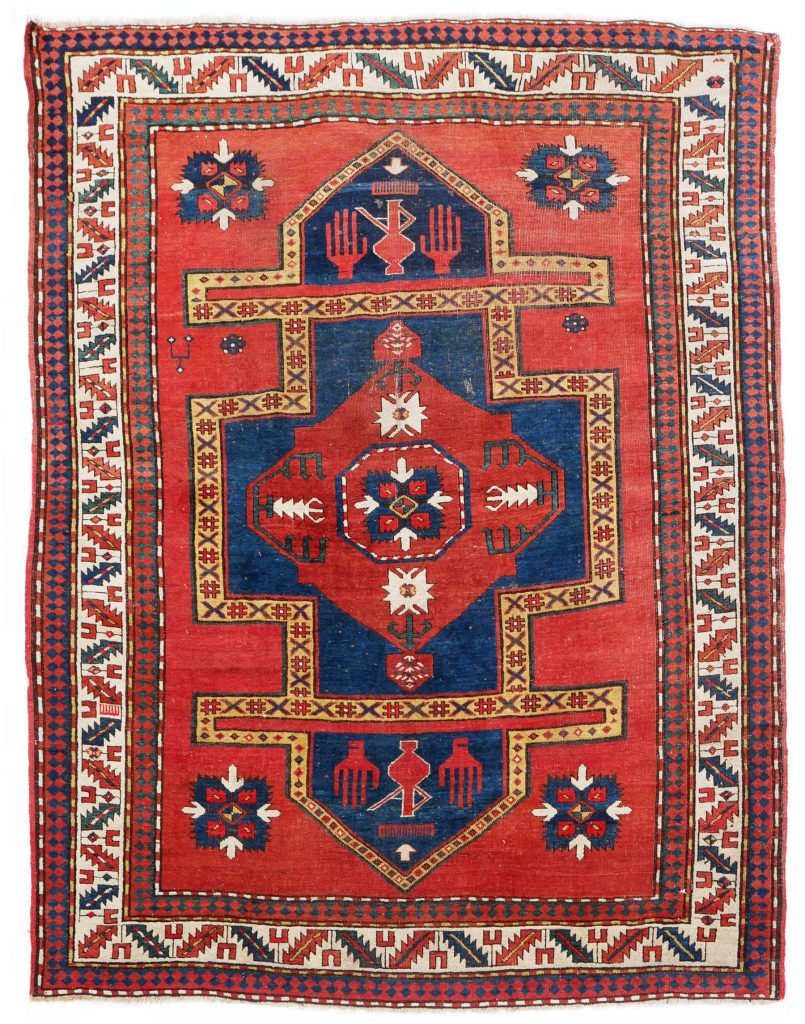
Understanding of symbols in the oriental rugs is a complex process that requires a thorough ethnographic research. The featured rug, a late 1800s or early 1900s Kazak from the Armenian village of Shusha in Azerbaijan. displays a number of motifs that may be characteristic to baptismal carpets used in Christian ceremonies.
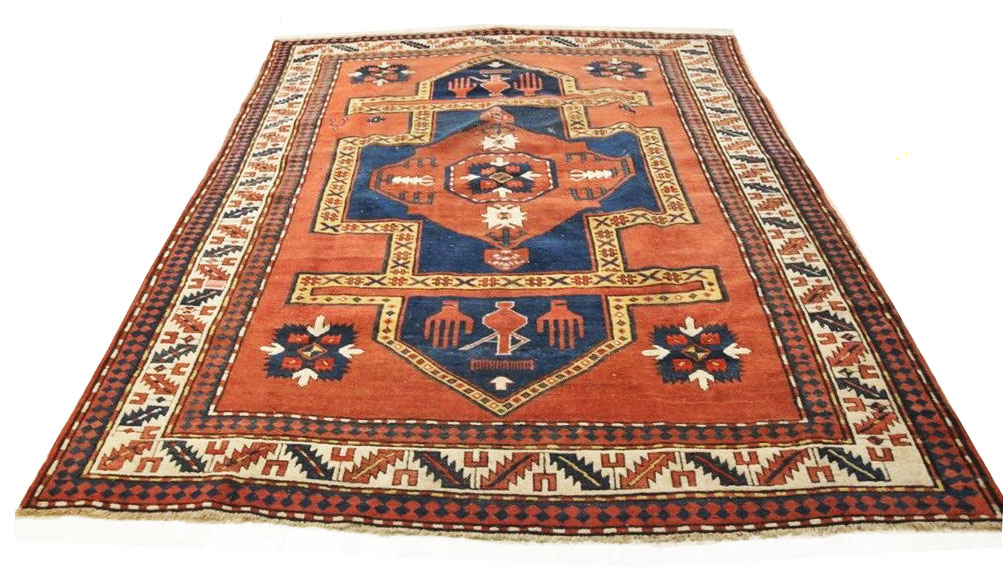
At first, this carpet appears to be a classic Islamic prayer rug which is owned mainly to the niche (mihrab) and the ‘hands of Fatima’ or simply ‘khamsa‘ (five) motifs.
An in-depth analysis however reveals a very different picture.
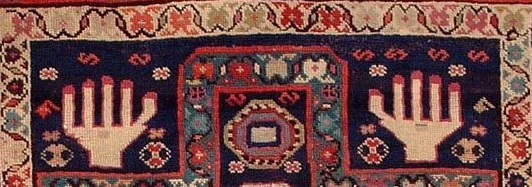
While the presence of the ‘Hands of Fatima’ motif renders this rug overtly suggestive of the Islamic prayer rug, other artists opted to use one hand only, perhaps, to prevent such obvious association.
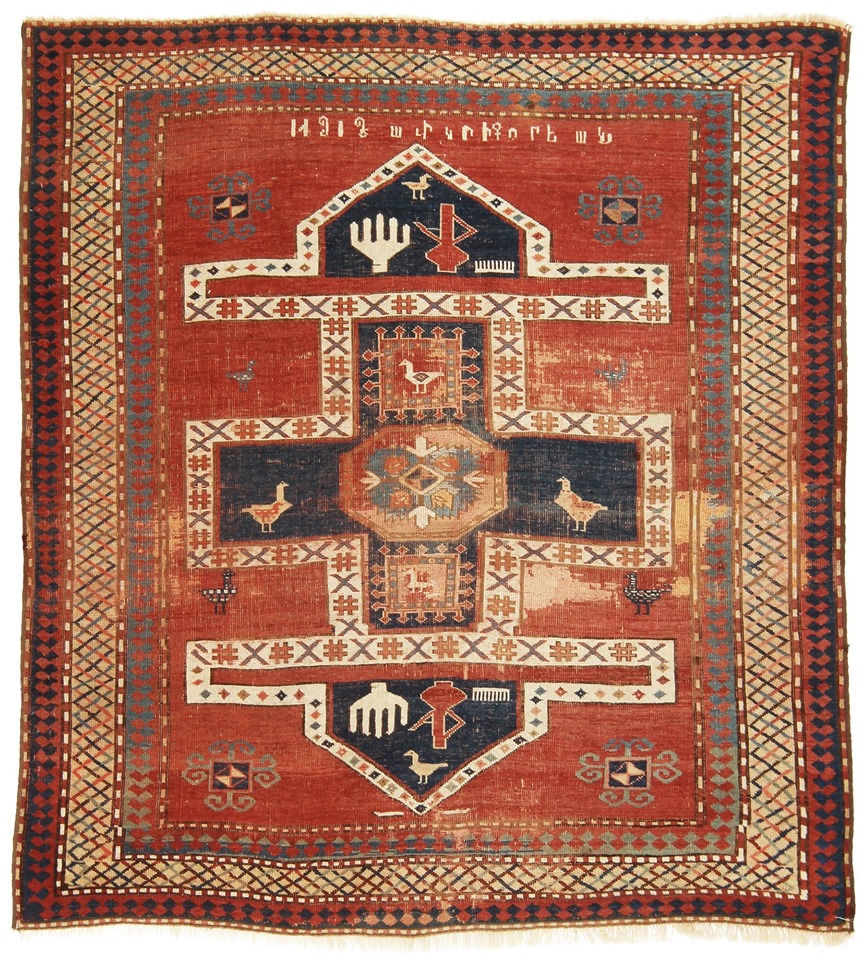
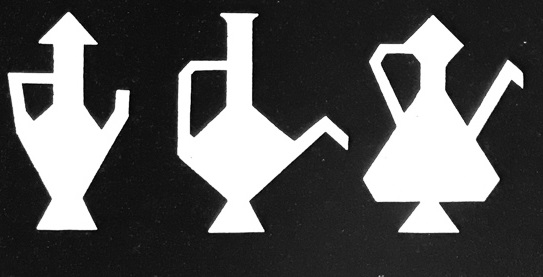
As suggested in our previous article Prayer Design , the roots of the classic Ottoman prayer designs may in fact reflect ancient imagery found in various Christian manuscripts. However, the symbolic use of the Tree of Life, for instance, predates Christianity or, for that matter, any practiced religion. It is arguably. the Tree of Life image that evolved in Islam to form the classic image in prayer design – the mihrab
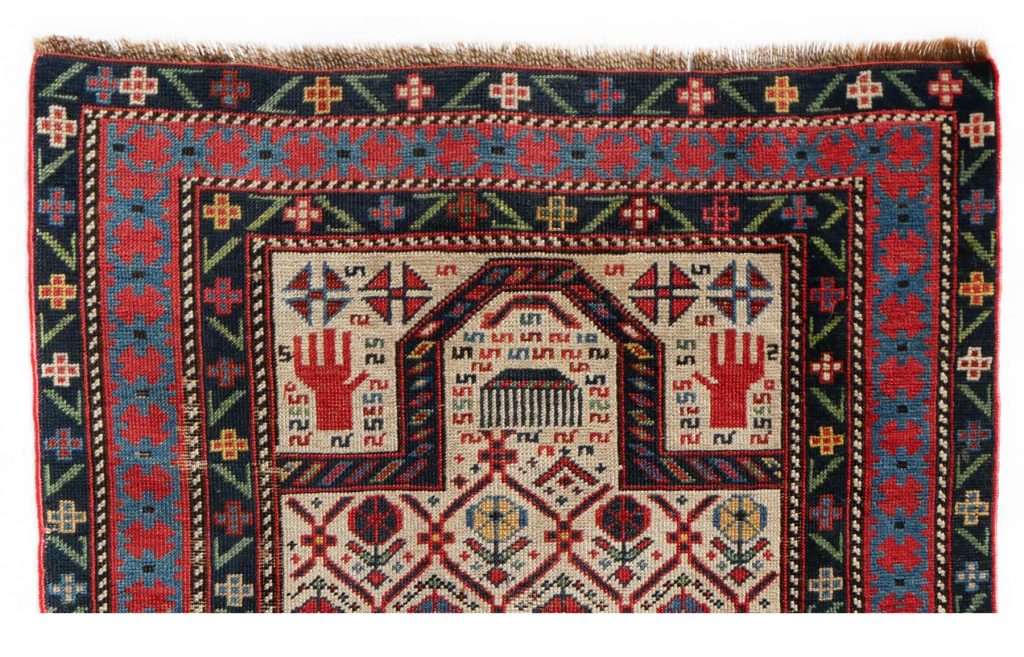

The most suggestive symbols of the carpets in question are inscribed into the mihrab (or the crown of the Tree of life) and consist of Hands, an Ewer, and a comb.

‘A motif stylized in the form of a water container, symbolizes purity and purification and [is] used also as a symbol of pregnancy.’, while ‘The Hand motif is used against a spell or evil eye, where the comb motif is related to the protection of birth and marriage.’ (-) Yashar Bish Rugs&Kilims
Small, whimsical accents are sometimes added to the design in village and tribal rugs. More often than not, these may appear as flaws and/or distractions, e.g. a wisp of wool of different color, a small motif breaking the overall symmetry of the rug, etc.
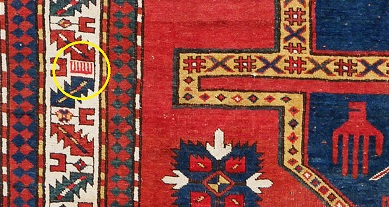
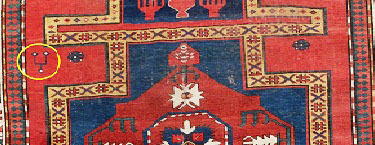
These motifs, despite appearing in various and often distant parts of the rug world, are part of the shared myriad of symbols rooted in primeval times.
The entire design of the rug is set within a light brown field; ‘ Colors play a major role in conveying the story of a rug (…) [and] Brown [represents] fertility, according to Esmaili Rugs&Antiques.
The roots of symbols appearing in village rugs from around the world are set in myths and archetypes; they have existed for ever, as long as man and woman walked the Earth. .
A.G.
Note on Shusha: Susha or Shushi is an Armenian village offered to Azerbaijan by Josef Stalin as a divide-and-conquer strategy in the early 20th century. Armenia regained the village during the many consecutive conflicts.
Quotations from Yashar Bish Rugs&Kilims and Esmaili Rugs&Antiques

